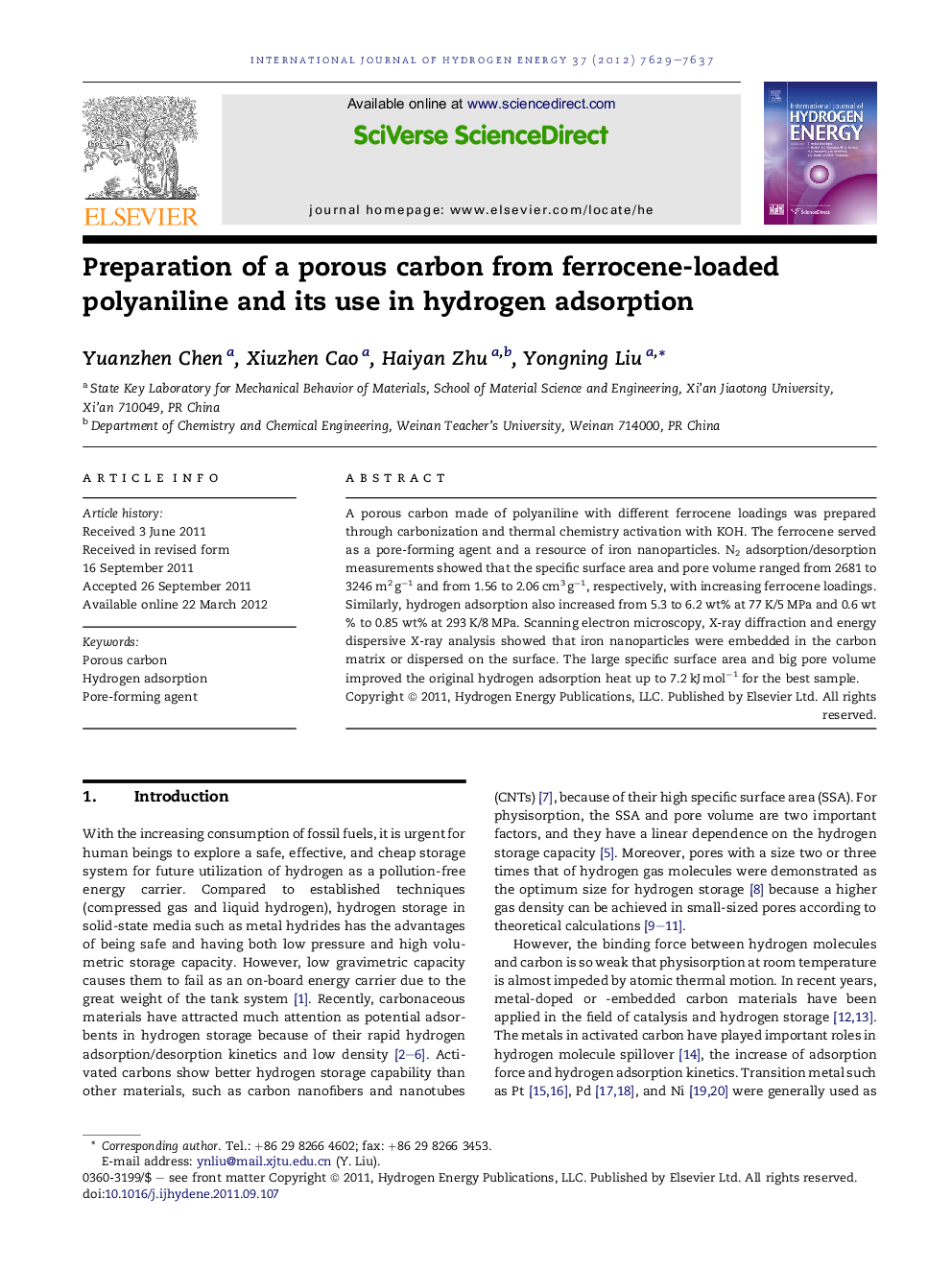| Article ID | Journal | Published Year | Pages | File Type |
|---|---|---|---|---|
| 1278566 | International Journal of Hydrogen Energy | 2012 | 9 Pages |
A porous carbon made of polyaniline with different ferrocene loadings was prepared through carbonization and thermal chemistry activation with KOH. The ferrocene served as a pore-forming agent and a resource of iron nanoparticles. N2 adsorption/desorption measurements showed that the specific surface area and pore volume ranged from 2681 to 3246 m2 g−1 and from 1.56 to 2.06 cm3 g−1, respectively, with increasing ferrocene loadings. Similarly, hydrogen adsorption also increased from 5.3 to 6.2 wt% at 77 K/5 MPa and 0.6 wt% to 0.85 wt% at 293 K/8 MPa. Scanning electron microscopy, X-ray diffraction and energy dispersive X-ray analysis showed that iron nanoparticles were embedded in the carbon matrix or dispersed on the surface. The large specific surface area and big pore volume improved the original hydrogen adsorption heat up to 7.2 kJ mol−1 for the best sample.
► Porous carbon was made of polyaniline with different ferrocene loadings. ► The ferrocene served as a pore-forming agent and a resource of iron nanoparticles. ► The largest specific surface area and pore volume reaches up to 3246 m2 g−1 and 1.58 cm3 g−1, respectively. ► The largest excess hydrogen adsorption reaches up to 6.2 wt% at 77 K. ► The original hydrogen adsorption heat reaches up to 7.2 kJ mol−1 for the best sample.
